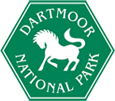Grass Moor and Bracken
Grass moor is defined as moorland dominated by grasses growing over mineral soil or shallow peat. The grasses are typically bristle bent, common bent, sheep’s fescue and mat grass. Other typical plants include tormentil, heath milkwort and heath bedstraw.
It is frequently invaded by bracken, which is a problem in some areas, and heather and gorse are scarce. This habitat can be the product of heavy grazing. It supports many species characteristic of Dartmoor. Plant rarities include Vigur’s eyebright, chamomile and heath violet. Much of this habitat is within the North Dartmoor, South Dartmoor and East Dartmoor SSSIs.
Who lives in this habitat?
The main birds are wheatear, skylark and meadow pipit, with populations in 2000 of 3,000, 13,000 and 20,000 pairs, all of at least national importance. There were also estimated to be 400 pairs of whinchat breeding in this grassland and other moorland edge habitats. Dartmoor is a regionally important site for them and the stonechat population of 1,600 pairs is of international importance. See ground nesting birds.
Other characteristic wildlife includes the dark green fritillary, small heath butterfly and the common lizard. Some bracken stands have colourful stands of bluebells in spring.
The rarities of this habitat include the high brown fritillary, formerly widespread but now only occurring in three main areas in Britain, one of which is Dartmoor. This is one of our most threatened butterflies and is listed as vulnerable in the Red Data Book. Not as rare, but declining rapidly, is the pearl-bordered fritillary which is also found in this habitat. The caterpillars of both of these butterfly species feed on violet leaves growing beneath bracken.
Another rare insect found in this habitat on Dartmoor is the nationally rare hornet robber-fly. This large spectacular species lays its eggs on the dung of cattle and ponies and hunts the other insects that visit the dung.
